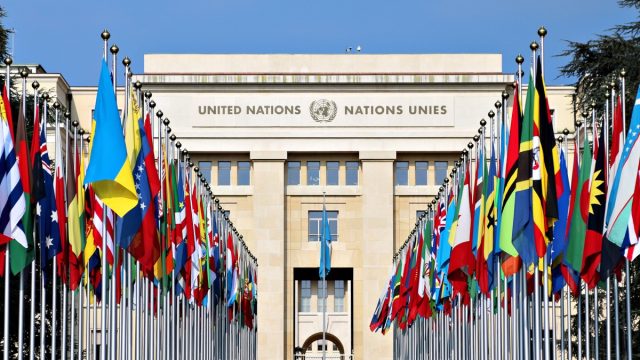This Is Why Countries Have Flags to Begin With

The Dannebrog, the national flag of Denmark, can be spotted on every public building, and many private ones, too. The flag of Greece is so celebrated that even Greek Cypriots—civilians living in Cyprus, a totally different country—will fly it high. Head to Japan, and you’ll spot an astonishing amount of French businesses and residences proudly displaying the French Tricolour, 6,000 miles away from France itself. And you don’t need us to tell you just how pervasive America’s good ole stars and stripes are.
Yes, for basically every country on the planet, the national flag is an inextricable part of their culture. But how did a single piece of cloth come to definitively represent entire swathes of land? Well, it’s time to find out the history of these banners!
What were the first flags?
Before flags represented countries, they were used for two main reasons: to rally troops in battle, and to connect ancient people with a supernatural power (generally, a god or deity). Whitney Smith, the author of Flags Through the Ages and Across the World—a definitive book on the subject—points out that flags are a tradition dating back about 5,000 years, though it’s unclear where and when exactly the first flag was raised.
That’s because the very first flags weren’t flags at all. Rather than cloth, these vexilloids (as they were called) were often large, wooden staves engraved with an emblem. Around the globe—in locales like modern-day Iran, Egypt, and Rome—ancient armies gathered behind such rallying posts. In battle, vexilloids also helped define where each side’s territory began and ended, helping curb inadvertent friendly fire. (If you were safe behind your side’s vexilloid, you knew not to stab or shoot anyone.)
It wasn’t until the 6th century C.E.—when the production and distribution of silk from China really proliferated—that vexilloids started evolving into flags, as reported by The Atlantic.
The Ottoman Empire was one of the first ancient civilizations to create what we’d recognize today as a flag, points out Barbara Karl, the curator of textiles and carpets at the MAK Museum of Applied Arts/Contemporary Art in Vienna, Austria. Called the sanjak i-sherif, the Ottoman Empire’s flag gradually became recognizable to surrounding nations, thus adeptly representing an entire civilization. Years later, during the Middle Ages in Europe, the flags that knights displayed on their armor and shields not only identified their loyalty, but also served to represent entire fiefdoms.
Why do we have flags today?
According to the Danish Naval History organization, in 1219, with the adoption of the Dannebrog, Denmark was the first country to institute a national flag. Over the following two centuries, countries like Austria, Latvia, Albania, and Switzerland followed suit with their own national flags. These long-ago banners were primarily displayed on ships, according to the Museum of American Heritage. That way, in port, it was easy to identify where each vessel was arriving from. (Also, by flying national flags high on the mast, it was easier for crews to spot enemy ships on the open ocean.)
Due to the emergence of the nationalist movement in the latter part of the 18th century—in which nations around the world developed an earnest desire to represent their country and people on an international stage—the civilian use of national flags became popular, according to the Historical Dictionary of Switzerland.
Presently, the BBC reports flags are used by pretty much every nation in the world as a means of global representation; all 195 countries formally recognized by the United Nations are represented by one. So while the flags of today don’t help with naval combat or high-seas trade, they still hold a whole lot of significance.
For instance, look at the adoption of the national flag of France, the French Tricolour. After the French Revolution, the citizens of a war-torn France looked for a symbol to signify the end of the monarchy’s tight grip on their nation. Sure, the Tricolour has had its ups and downs—it was legislatively adopted in 1794, then swapped out in 1815, then adopted again in 1830, then sidelined for a short period in 1848—but, nowadays, it’s regarded as one of the most recognizable, powerful, inspirational national banners out there. In its own way, the Tricolour serves as a symbol for the birth of a new nation and its governing ideals.
Wonder where the red-white-and-blue color combination comes from? Find out, along with more mind-blowing trivia, among these 150 Random Facts So Interesting You’ll Say, “OMG!”
To discover more amazing secrets about living your best life, click here to follow us on Instagram!